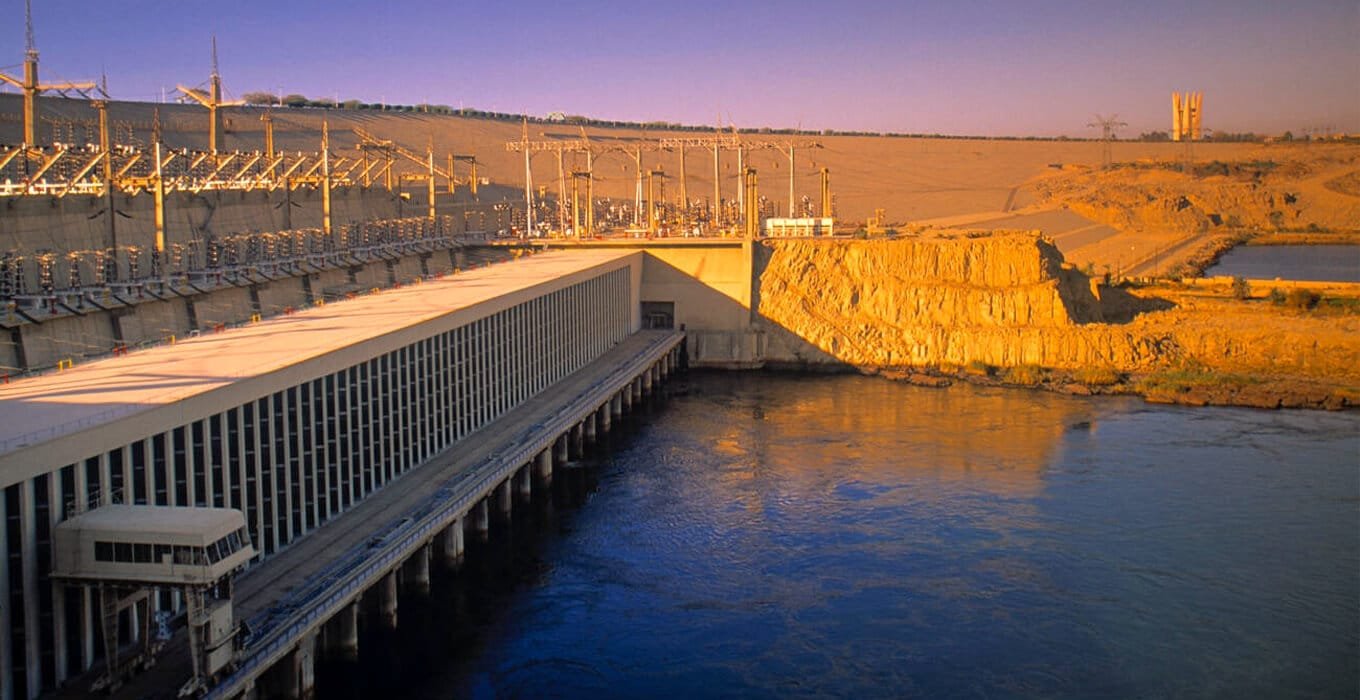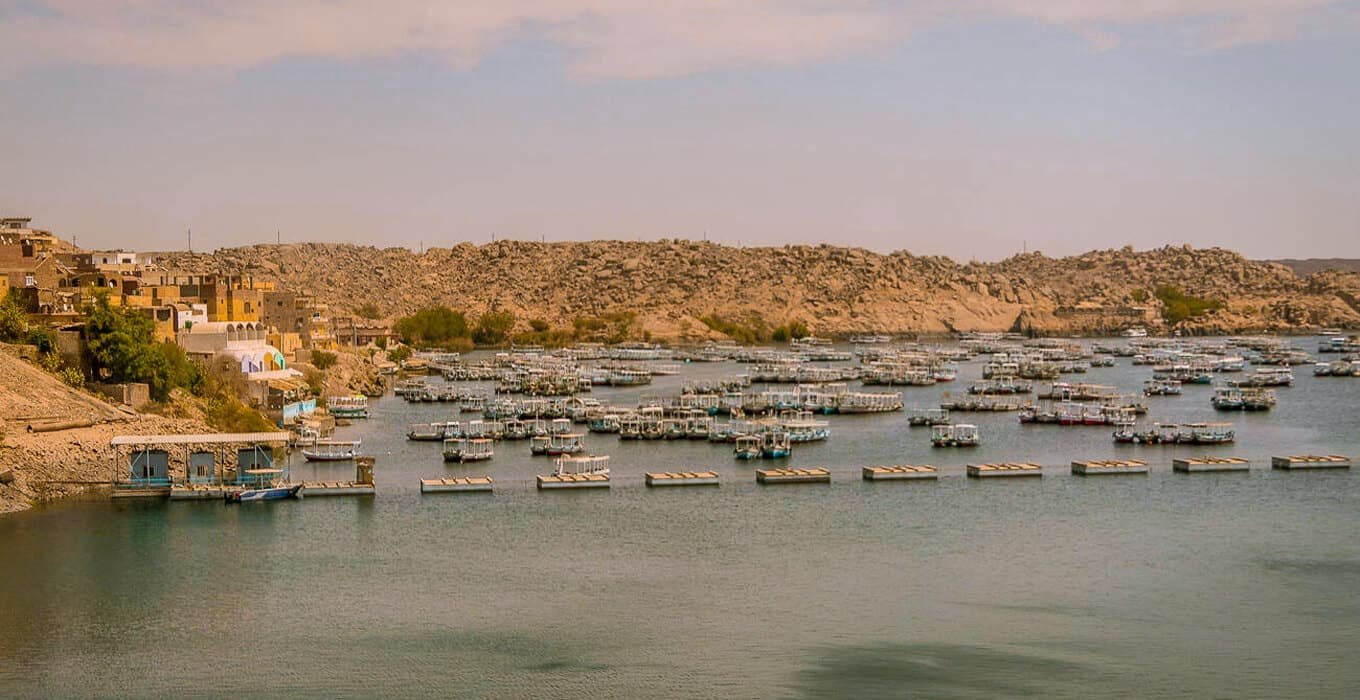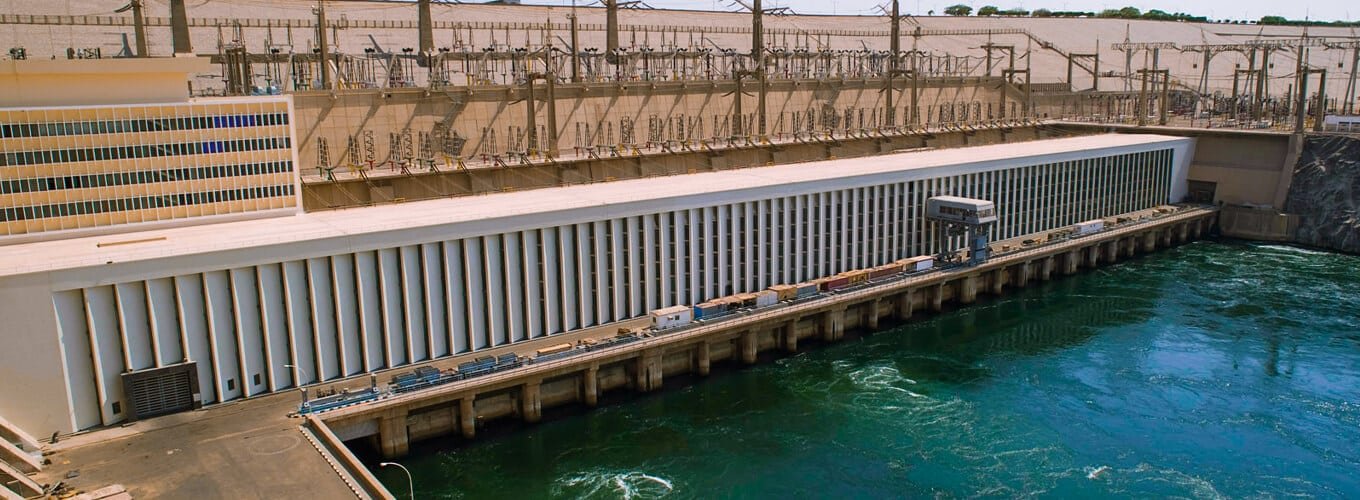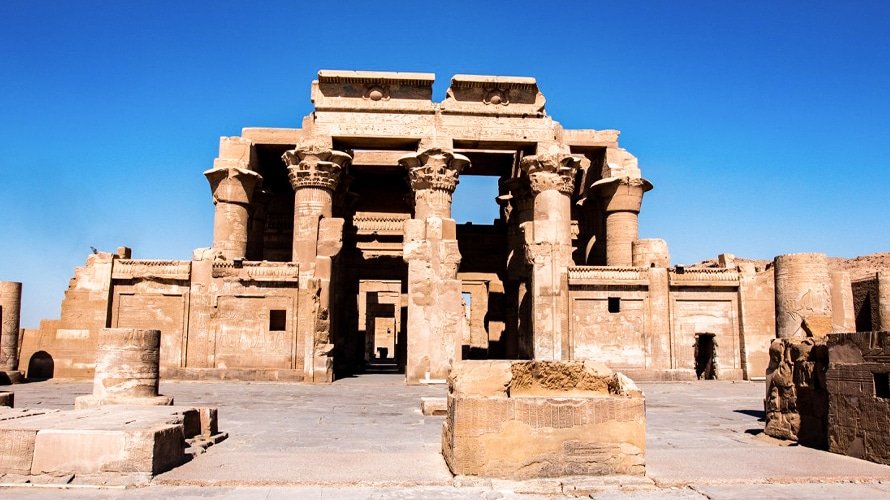The Aswan Dam, an engineering marvel constructed across the mighty Nile River, holds profound significance for Egypt. Completed in 1970, this colossal structure has transformed the nation’s relationship with its lifeblood, the Nile. The dam’s primary purpose was to control the river’s unpredictable floods and droughts, ensuring a more stable water supply for irrigation and hydropower generation. However, the Aswan Dam’s story is not without its complexities. While it has undeniably ushered in an era of agricultural prosperity and energy security, the project also triggered environmental and social consequences that continue to be debated today.
The Aswan Dam: A Monumental Construction Project
The Aswan Dam stands as a testament to human ingenuity and ambition. The construction project was a massive undertaking, spanning from 1960 to 1970. Thousands of workers, along with engineers from around the world, toiled tirelessly to bring this colossal structure to life. The scale of the dam is awe-inspiring: it reaches 3830 meters in length, 111 meters in height, and holds a volume of over 43 million cubic meters of material.
Building a dam across the Nile, one of the world’s longest rivers, presented numerous engineering challenges. The powerful flow of water had to be diverted, requiring the construction of cofferdams and diversion canals. The dam’s foundation needed to be built on bedrock, and the massive amount of material used in the dam’s construction had to be sourced and transported. Yet, through perseverance and innovation, these challenges were overcome, shaping a landmark that would forever alter the landscape of Egypt.
Controlling the Nile: Benefits of the Aswan Dam

For centuries, the Nile River’s annual floods dictated the rhythm of life in Egypt. While these floods brought fertile silt, they could also be devastating, wiping out crops and causing widespread damage. The Aswan Dam transformed this dynamic, harnessing the river’s power for the benefit of the nation.
- Flood Control: One of the dam’s primary functions is to prevent flooding. The vast reservoir, Lake Nasser, stores excess water during high-flow periods, safeguarding downstream settlements and agricultural lands from inundation.
- Drought Mitigation: The dam also serves as a buffer against droughts. By regulating the flow of the Nile, it ensures a steady water supply for irrigation, even during dry seasons. This has significantly reduced the risk of crop failure and famine.
- Revolutionizing Agriculture: Reliable irrigation made possible by the Aswan Dam has revolutionized Egypt’s agriculture. Farmers can now cultivate multiple crops per year and expand into previously arid areas. Increased production of staples like wheat and rice, alongside cash crops like cotton, has bolstered the Egyptian economy and food security.
- Powering a Nation: The Aswan Dam’s hydroelectric power plant is a vital source of electricity for Egypt. Its twelve turbines have the capacity to generate 2.1 gigawatts of power, supplying a significant portion of the country’s energy needs. This has facilitated industrial development and improved the lives of millions of Egyptians.
Lake Nasser: The Vast Reservoir
The creation of the Aswan Dam gave birth to Lake Nasser, one of the world’s largest artificial lakes. This massive reservoir stretches 550 kilometers (340 miles) in length and, at its widest point, reaches 35 kilometers (22 miles) across. Its formation flooded a vast area, displacing communities and submerging ancient archaeological sites.
- Irrigation Lifeline: Lake Nasser serves as a crucial water source for irrigation. Its regulated flow feeds a complex network of canals, providing water for cultivating vast swathes of agricultural land in Egypt and Sudan.
- Fisheries & Aquaculture: The lake has become a thriving freshwater fishery. Species like Nile perch and tilapia support a fishing industry that provides both food and a livelihood for local communities. Additionally, aquaculture practices are developing along the lake’s shores.
- Tourism Potential: Lake Nasser’s scenic beauty and rich history hold immense tourism potential. Visitors can take boat cruises to explore ancient Nubian temples relocated to higher ground, such as Abu Simbel. The lake’s tranquil waters offer opportunities for birdwatching, fishing, and simply relaxing in a unique desert environment.
The Aswan Dam’s Impact: Environmental and Social Considerations
The Aswan Dam, while a catalyst for development, also brought significant environmental and social changes. It’s crucial to acknowledge these alongside the dam’s benefits.
- Displacement and Relocation: The creation of Lake Nasser led to the forced relocation of thousands of people, primarily Nubians, who lost their homes and ancestral lands. This displacement caused deep social and cultural disruption.
- Lost Antiquities: Numerous ancient archaeological sites were flooded by Lake Nasser. While some iconic temples, like Abu Simbel, were painstakingly moved to higher ground, many valuable historical treasures were lost beneath the waters.
- Altered River Ecology: The dam fundamentally changed the Nile’s natural flow pattern. The fertile silt that once replenished downstream soils is now trapped behind the dam, requiring farmers to rely heavily on artificial fertilizers. The lack of silt flowing into the Mediterranean Sea has led to coastal erosion and saltwater intrusion, affecting marine ecosystems and fisheries.
- Water Quality Concerns: Reduced water flow downstream can lead to increased concentration of pollutants, although the vast volume of Lake Nasser does act to some degree as a buffer, absorbing pollutants. Furthermore, agricultural runoff can contribute to nutrient pollution and algae blooms in the lake.
The Aswan Dam’s immense scale makes its impact far-reaching and complex. Ongoing efforts are aimed at mitigating the negative consequences while maximizing the project’s benefits for Egypt’s present and future generations.

Visiting the Aswan Dam: A Tourist Destination
As a symbol of modern Egypt’s ambition, the Aswan Dam draws visitors from around the world. Here’s what you need to know for planning your trip:
- Tours & Access: Several tour operators in Aswan offer excursions to the dam site. These tours typically include transportation, a knowledgeable guide, and access to the restricted dam area. Individual visits may be possible but require special permission in advance.
- Viewing Points and Photos: There are designated viewing areas where you can marvel at the dam’s sheer size and take panoramic photos. You’ll witness the power of the controlled water release and the vastness of Lake Nasser behind it. A monument to Soviet-Egyptian friendship stands nearby.
Nearby Attractions: Combine your dam visit with other attractions in the Aswan area:
- Philae Temple: This beautiful temple dedicated to Isis was rescued from the rising waters of Lake Nasser and relocated to Agilkia Island.
- Nubian Museum: Delve into the rich history and culture of ancient Nubia, a civilization impacted by the dam’s creation.
- Unfinished Obelisk: See the remnants of an abandoned ancient obelisk, offering insight into Pharaonic construction techniques.
- Day Trips: If you have more time, consider a boat cruise on Lake Nasser. These cruises take you past scenic landscapes and often include visits to relocated Nubian temples like Abu Simbel.
The Aswan Dam offers a fascinating glimpse into Egypt’s modern engineering prowess and the transformative power of the Nile.
FAQs
Why was the Aswan Dam built?
The Aswan Dam was built for several key reasons:
- Flood Control: To safeguard against the Nile’s destructive floods, ensuring the safety of settlements and agricultural land downriver.
- Irrigation: To provide a reliable, year-round water supply to expand Egypt’s arable land and increase crop yields.
- Hydroelectric Power: To generate a significant amount of clean energy, powering Egypt’s economic development.
When was the Aswan High Dam built?
Construction of the Aswan High Dam spanned a decade, from 1960 to 1970.
Is the Aswan Dam safe?
The Aswan Dam is designed and built with robust structural integrity. It undergoes continual monitoring and maintenance to ensure its safety. While no large dam is entirely without risk, the Aswan Dam is considered structurally sound.
How tall is the Aswan Dam?
The Aswan Dam stands at an impressive 111 meters high.
What is the negative environmental impact of the Aswan Dam?
The Aswan Dam has some notable negative environmental impacts:
- Displacement: The flooding of Lake Nasser caused the displacement of thousands of people, mainly from Nubian communities.
- Siltation: Trapping of nutrient-rich silt behind the dam reduces the natural fertility of downstream soils and increases reliance on artificial fertilizers.
- Coastal Erosion: The lack of silt reaching the Mediterranean Sea has led to coastal erosion and saltwater intrusion, harming fisheries and ecosystems.
Can you take a boat cruise on Lake Nasser?
Yes! Boat cruises are a popular way to experience Lake Nasser’s scenic beauty. Options exist for both short cruises and multi-day journeys that often include visits to the relocated temples of Abu Simbel and other Nubian sites.
Conclusion
The Aswan Dam stands as a testament to human ambition and its ability to reshape the natural world. Undeniably, it has played a pivotal role in Egypt’s modernization and development, securing water resources, generating vital electricity, and expanding agricultural capacity. Yet, the dam’s legacy is not without complexities. It has transformed Egypt’s relationship with the Nile River and brought about both social and environmental changes that continue to be felt today.
As Egypt navigates the 21st century, the Aswan Dam remains an integral part of the nation’s infrastructure. Efforts to mitigate its negative impacts, while maximizing its benefits, will continue. The question remains: how can Egypt balance its development needs with the long-term health of the Nile and the diverse communities that depend on it?
Related Article to Read:






